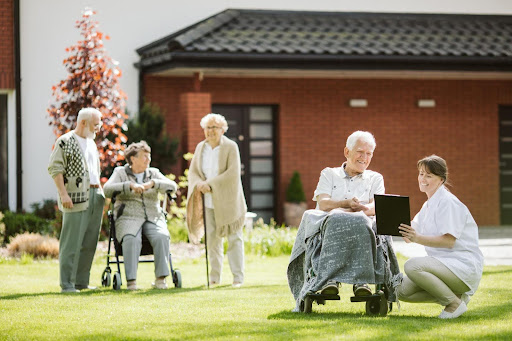Imagine a place where your loved one with memory loss feels safe and comfortable. Designing such a supportive environment is crucial for enhancing their quality of life.
Research shows that a well-thought-out living space can reduce confusion and anxiety. This can also help in allowing seniors to maintain a sense of independence.
This article provides helpful tips to create a nurturing home for seniors struggling with memory impairments. Keep on reading to learn more.
The Importance of a Supportive Environment
A supportive environment begins with understanding the unique needs of seniors experiencing memory loss. Such an environment is tailored to minimize risks and offer comfort. Consider these elements when shaping your living space:
Familiarity
Use items and decorations that are familiar. This helps bring back happy memories. It can make the space feel more comfortable and safe.
Clutter Reduction
Keep spaces simple and tidy. Less stuff can help reduce confusion. A clean area is easier to move around in.
Lighting
Make sure rooms are bright enough. Good lighting helps you see better and stay safe. It’s important for avoiding accidents.
Color Scheme
Choose calm colors for the walls and furniture. Soft colors can make the room feel peaceful. This helps create a relaxing place to be.
Areas to Focus On
When tailoring an environment for seniors with memory loss, specific areas of the home can require significant attention. Here are some critical spaces to modify:
Living Room
Your living room should welcome your loved one and be easy to navigate. Invest in comfortable furniture and arrange it to allow movement. Remove unnecessary items that may cause confusion or trips.
Kitchen
The kitchen can be a challenging area for those with memory issues. Keep frequently used items easily accessible, label cabinets with clear signs, and consider using non-slip mats to prevent falls.
Bedroom
Bedrooms should be havens of relaxation. Opt for soft bedding and familiar pictures. A clock with large, readable digits can assist with time orientation, helping to prevent disorientation during day and night.
Bathroom
Safety in the bathroom is paramount. Install grab bars and non-slip surfaces to minimize hazards. A shower chair can also offer stability and ease of use.
Making it Personal
While modifications are crucial, adding personal touches makes a house feel like home. Here are ideas to consider:
- Incorporate family photos into the decor
- Include memorabilia or heirlooms
- Personalized reminders or notes
Engagement Through Routine
A supportive environment is not just about the physical space; it also involves emotional support through engagement. Maintain a daily routine that includes familiar activities. Encourage activities that stimulate their mind while remaining enjoyable, such as:
- Puzzles and memory games
- Gardening or crafts
- Listening to favorite music
- Cooking or baking together
If you need help, there are also specialized facilities that can help you out with your elderly. For example, Alzheimer’s care services for seniors in Salisbury can provide the proper environment for elderly care.
Safe and Engaging Space for Seniors With Memory Loss
Making a home safer for seniors with memory loss helps them feel better and safer. A good, helpful home also gives your loved one more freedom.
Even though it might feel hard, changing your home can be a good thing. By making easy changes, you can create a place that feels comfortable, familiar, and happy for your loved one.












